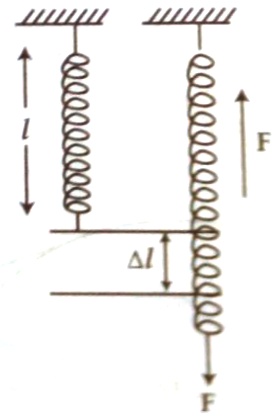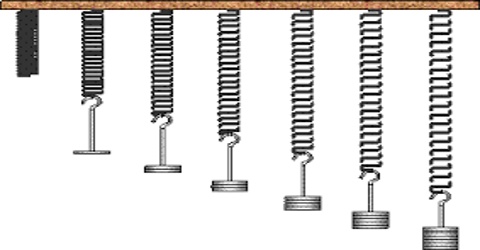Elastic Force
When a spring is expanded by pulling, it appears that the spring pulls our hands in opposite direction. This type of reaction force can be explained by Newton’s third law of motion. Clearly, the spring resists the attempt of straining the spring and when the spring is released it regains its original length. Elasticity is the ability of a material to return to its original shape after being stretched or compressed. When an elastic material is stretched or compressed, it exerts elastic force. Here, the force for which the spring regains its original shape and size is the elastic force.
Definition: Within elastic limit if the size and shape of a body is changed and the force due to which the body regains its original shape and size is called the elastic force.
Example: Let one end of a spring be fixed in a rigid support and a force F is attached to the other end [Fig]. This force will act on the support through the spring.

According to Newton’s third law of motion the rigid support will also assert equal and opposite reaction force F on the spring. The two forces acting on the spring will neutralize each other. As a result, there will be no displacement of the whole spring; but its length increases i.e., relative displacement occurs between different portions of the spring. Normally strain of this type on the body is considered to have happened by the external force; the spring returns to its original shape due to elastic force.












